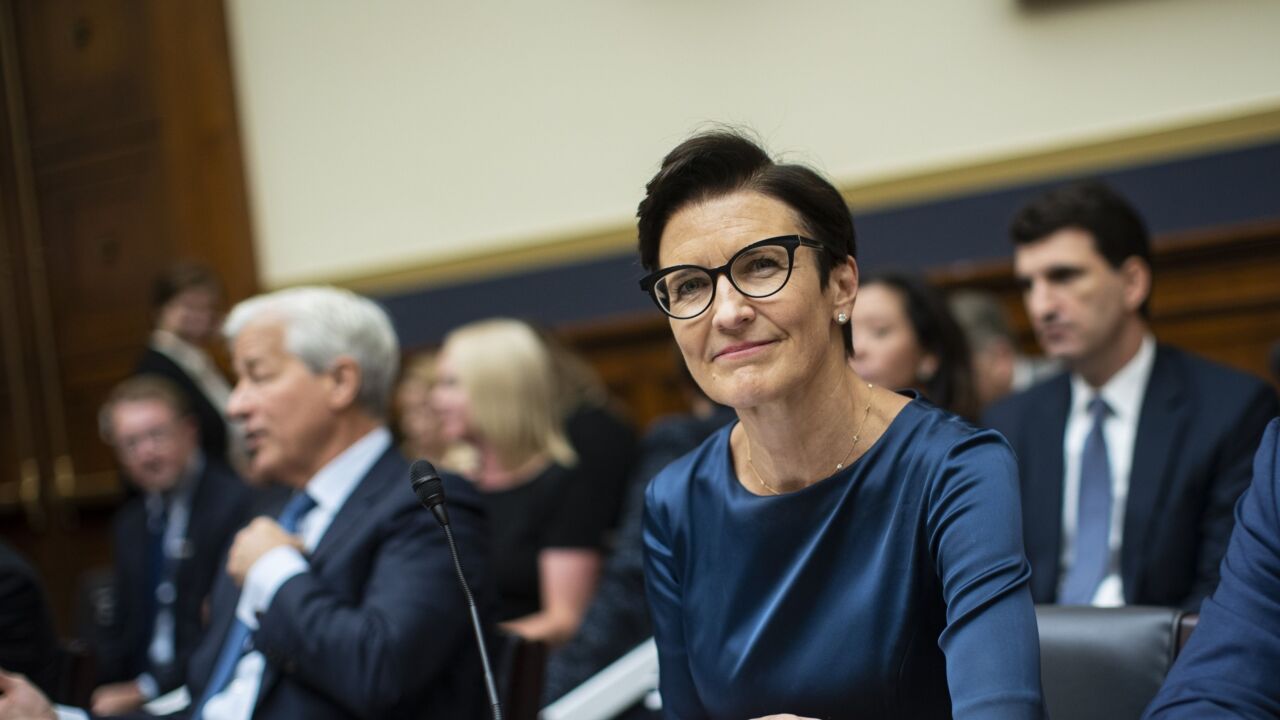-
Big banks' huge settlements and other legal headaches have grabbed headlines for months, but now it's regional banks' turn. Several regionals have upped their estimated legal exposures as probes and lawsuits continue to surface.
March 20 - PH
B of A Nears $16B-$17B Deal; Banks' Living Wills 'Too Sanguine'
August 7 -
From the architects of multibillion-dollar mortgage settlements comes the latest scare for banks: a Department of Justice investigation of subprime auto lending. But the auto loan market has a different track record and players than mortgages, setting the stage for a unique fight among prosecutors, lenders and dealers.
August 6 -
The Federal Housing Administration is revamping its loan review processes to correct faulty underwriting in an effort to lure institutions back to the program.
July 23 -
BancorpSouth has withdrawn applications for two planned acquisitions after the Tupelo, Miss., company drew regulatory scrutiny for its Bank Secrecy Act compliance.
August 6

Banks seem to be dividing into two camps when it comes to legal costs the haves (as in having huge potential legal costs) and the have-nots.
The have-nots in this case are the lucky ones, as they may be
Then there are those in the other camp, including JPMorgan Chase and Wells Fargo, that raised the top end of their potential legal costs as they continue to battle through legacy issues from the financial crisis and more recent controversies. Wells estimated that its legal exposure could be as high as $1.2 billion, a 32% increase from its first-quarter outlook; no specific reason was given for the hike.
And questions have swirled whether Bank of America has sufficient reserves to cover its legal liabilities, as it
The legal divide could have a direct impact on competitiveness.
With short-term interest rates remaining near zero and loan demand spotty, many banks are left to rely on expense savings to generate profits. Legal costs eat into that. And those banks that are able to move past the crippling legal costs are going to have more money to invest in growth initiatives.
"It will allow them to focus on capital building, and returns of excess capital following the [Comprehensive Capital Analysis Review] stress test," said Erik Oja, an analyst at S&P Capital IQ.
U.S. Bancorp has been one of the few able to return more capital to shareholders because of less-demanding legal-settlement costs, Oja said. Indeed, U.S. Bancorp in the second quarter said the upper end of its losses would not be financially material, a decrease from an upper range of $200 million in the first quarter.
However, no bank executives can get too comfortable as new legal threats keep popping up.
Some government agencies appear to be testing the waters for new avenues of investigation, notably in the area of auto lending, Oja said.
JPMorgan and other big Federal Housing Administration lenders have been
In one example tied to CRA compliance, Evans Bancorp, an $831 million-asset company in Hamburg, N.Y., reported second-quarter expenses of $1 million, or 14 cents per share, related to litigation filed by the New York state attorney general based on allegations that its residential mortgage operation violated fair lending rules.
Many bank executives made a point of stressing that high legal costs are going to be around for some time longer.
"We are going to have elevated and lumpy litigation costs as we work through the issues that you are aware of," Marianne Lake, the chief financial officer at JPMorgan, told an analyst on July 15 in response to a question about legal costs.
Tayfun Tuzun, the chief financial officer at the $131 billion-asset Fifth Third, has been reluctant to predict blue skies ahead on the legal front.
"We are dealing with similar issues that other banks are dealing with and we expect these litigation charges, obviously, to end," Tuzun said during the $131 billion-asset bank's earnings conference call. "We don't necessarily have a clear path to the calendar time when it will end."
The reasons for his hesitation became clearer in recent days. At the same time Fifth Third lowered its estimate of maximum legal exposure by 11%, to $104 million, it reported that total litigation settlements and reserves in the second quarter had increased $43 million from a year earlier.
And then it surprised analysts on Aug. 7 when it said it would
All executives are looking for reasons to be upbeat, but patience is required.
The $24.2 billion-asset First Horizon National has had more than its fair share of legal issues. In one recent case, the Memphis, Tenn. company in April agreed to pay $110 million to the Federal Housing Finance Agency to settle allegations it sold faulty mortgages to Fannie Mae and Freddie Mac. First Horizon raised the top end of its potential legal costs at the end of the second quarter, to $115 million from $113 million.
But in spite of First Horizon's legal problems there does seem to be cause for optimism, says Chris Marinac, an analyst at FIG Partners. One may be the fact that its insurance is kicking in. First Horizon during the second quarter reached an agreement with insurance companies to recover $47.1 million related to its litigation losses.
"Some litigation uncertainty still remains with [First Horizon], but each quarter becomes incrementally stronger on these issues."





